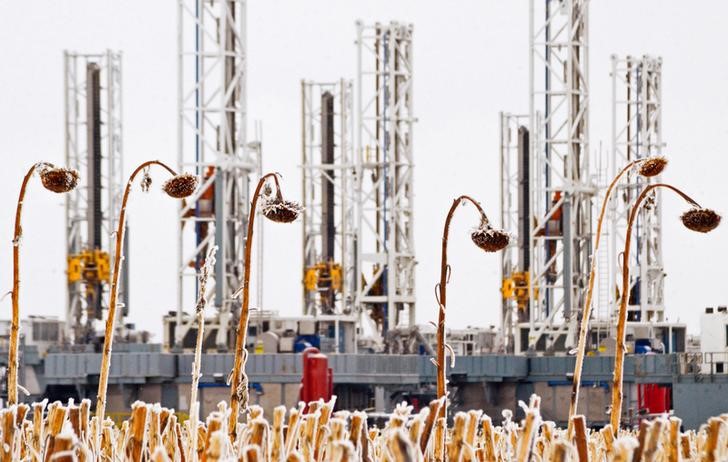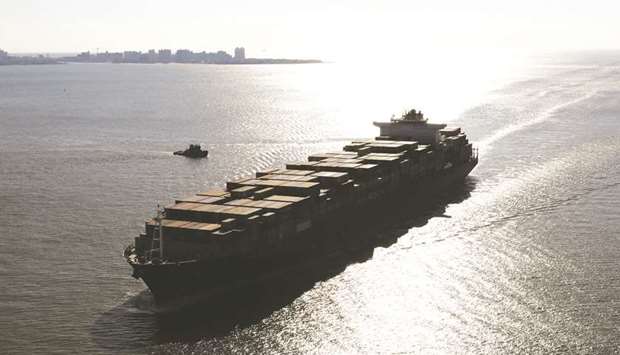Clean energy is also resilient energy

NASSAU — The Caribbean and its surroundings are on the front lines of climate change. The Bahamas, the archipelago that stretches over the crystal-blue waters between Florida and Cuba, have been battered in recent years by devastating hurricanes, which have increased in severity and frequency as a result of global warming. As is the case worldwide, there is an element of injustice to this. Given that the Bahamas and Caribbean countries emit relatively minuscule amounts of carbon dioxide, their residents bear very little of the blame for the climate crisis.
But the people of the region are now flipping the script, transforming themselves from victims of climate tragedies into global leaders in clean, secure energy. The Caribbean countries have compelling economic reasons for embracing the green-energy transition. For generations, they have relied on imported fossil fuels to power their economies, which means they have long had to deal with the uncertainties of world oil markets and thus significant cost fluctuations for electricity.
Thanks to advances in renewable energies, that economic challenge has created an opportunity. Unlike imported fossil fuels, which are subject to rising costs, the prices of solar power and other clean energy sources, along with the necessary battery storage systems, continue to fall. As these technologies have become more affordable and competitive with older, dirtier fuels, they have created a powerful incentive for island countries to move away from conventional fossil fuel-fired power plants. Moreover, this trend will only grow more pronounced from here on out, as the cost advantages of newer, cleaner energies make them increasingly attractive relative to fossil fuels.
For regions like the Caribbean, solar and battery storage systems do more than simply reduce the costs of electricity; when deployed in the right way, they also improve climate resilience. As the Bahamas and other countries across the region have demonstrated over the past few years, solar- and battery-powered microgrids can provide critical services for island communities during and after severe weather events that otherwise would knock traditional energy sources offline.
But in order for these new energy solutions to provide real resilience, they themselves need to be able to withstand the storms, which tend to ravage power lines and disconnect communities from centralised sources of energy generation. Thus, in the case of solar, much depends on the methods used to secure solar panels to the ground and to rooftops.
We already know that it is possible to construct photovoltaic (PV) systems capable of surviving even the most severe category of hurricane. Through a collaboration between the Rocky Mountain Institute, the government of the Bahamas and the country’s national utility, the Bahamas Power and Light Company, we have developed and installed a solar parking canopy at the National Stadium in Nassau that can withstand the winds of a category-five hurricane. We have also built the country’s first category-five resilient solar and battery storage microgrid on Ragged Island, and are now focusing on designing and delivering sustainable and resilient microgrids for critical facilities on Abaco, following the destruction wrought by Hurricane Dorian in September 2019.
As the planet continues to warm, increased moisture in the air will translate into even more severe and frequent tropical storms and hurricanes. What we saw with Dorian and Hurricane Maria in Puerto Rico in 2017 is likely to become commonplace. Fortunately, as the partnership in the Bahamas shows, many of the same measures needed to build resilience are also those needed to limit greenhouse-gas (GHG) emissions and slow the pace of global warming. Far from requiring a tradeoff, resilient PV systems check both boxes.
The Caribbean and Atlantic are hardly the only regions that will need to build more resilient energy infrastructure to prevent power disruptions. Communities around the world are increasingly confronting the challenges posed by severe and extreme weather, including the devastating fires in Australia, Indonesia and the western United States.
In all of these cases, clean, localised energy solutions offer unique advantages in terms of reducing emissions and keeping the lights on after a disaster. They point the way to a better future for our electricity system. By embracing the clean-energy transition, the Bahamas is setting an example for the rest of the world — and particularly for those countries that are responsible for the overwhelming share of global GHG emissions.
Jules Kortenhorst is CEO of the Rocky Mountain Institute. Whitney Heastie is CEO of Bahamas Power and Light. ©Project Syndicate, 2020.









BRUSSELS – The spread of the COVID-19 coronavirus across Europe and the United States has led to a sharp financial-market correction and prompted calls for active monetary and fiscal policy to prevent a recession. But a closer look suggests that such an approach might not help much at all.
The COVID-19 epidemic is marked by uncertainty. Technically, it does not represent a “black swan” event, because there have been other pandemics before. But it was, until a few months ago, unforeseeable, at least in specific terms. And it will have a long-lasting impact even if its precise evolution cannot be predicted today.
For now, it seems that the virus is moving westward. In China, where the virus emerged, infections are declining after the authorities implemented radical measures – including lockdowns that brought the economy to a standstill for over two weeks. Although it is too early to tell whether the virus has really been contained, economic life now seems to be normalizing gradually, implying that the “China shock” may be unwinding.
In the US and Europe, by contrast, the shock seems to be just beginning, with a fast-growing number of new infections raising the specter of severe economic disruption. This risk is particularly pronounced in the eurozone, which may not be able to weather a severe downturn without spiraling into crisis.
To be sure, the epidemic’s direct fiscal consequences seem manageable. Even Italy, which is currently suffering the most, could increase public spending for virus-containment measures without violating EU fiscal rules.
If these costs spiral – as seems likely, now that a quarter of the country, accounting for most industrial and financial activity, is under lockdown – the European Union should be able to offer support to Italy beyond allowing the government to run a larger deficit. Article 122.2 of the Treaty on the Functioning of the EU allows the European Council to grant financial assistance to a member state facing “severe difficulties” caused by “exceptional occurrences beyond its control.” This procedure should be activated now.
In any case, COVID-19’s trajectory suggests that it will likely spread farther, forcing other EU member states to adopt public-health measures at the expense of economic activity, particularly in important sectors such as travel and tourism. Moreover, supply chains will be impaired, not only by the temporary shutdown of the Chinese export machine, but also by disruptions within Europe. Neither interest-rate cuts nor new government expenditures would do much to offset the short-term effects of such shocks.
The more serious problems are likely to emerge from the financial system. While many firms can slash production quickly, running a business in “disaster recovery mode” still costs money, and debt still comes due. In Europe, where labor costs cannot be cut in the short run, the challenges this raises could be particularly serious.
Fortunately, most EU members have some system in place under which the government covers the wages of workers who become temporarily redundant for reasons outside of their employers’ control. These mechanisms, which would sustain personal incomes during the crisis, are the main reason why a long-lasting drop in consumption is unlikely. Once the virus is contained, European consumers will have little reason not to spend as much as before.
Yet two other possible developments could tip the eurozone into recession. The first is a sharp slowdown of global trade, which the EU has little power to counter. The second is a collapse in investment, which the EU can and should work to prevent.
The last eurozone crisis demonstrated that investment collapses when the financial system stops functioning. In market-based systems, like that of the US, this is a question of risk premia and plain access to credit, which policymakers can hardly influence. For Europe, with its bank-centric financial system, the key to weathering the COVID-19 crisis is thus to keep the banking sector healthy.
For that, a calibrated supervisory response is essential. The shift of banking supervision to the European Central Bank has led to more rigorous and selective credit policies by commercial banks. While this has reduced banking risks, applying tough lending standards at a time of severe economic stress caused by public-health measures could punish otherwise creditworthy firms that are facing temporary losses.
Italy’s government is providing direct financial support to companies directly affected by the lockdowns. But if the crisis spreads, the number of sectors that are affected (often indirectly) will increase. Governments cannot provide financial support to all of them. Banks can do much more, but only if they are willing to overlook bad financials. Supervisors should allow – and even encourage – such an approach.
A forbearance-based approach – together with the “automatic” fiscal stabilizers built into Europe’s social-security systems – would do far more to mitigate the risk of crisis than microscopic interest-rate cuts.
Additional fiscal stimulus, meanwhile, would be needed only in the unlikely event that the economic disruption is followed by a period of depressed demand. The eurozone’s fiscal rules pose no obstacle to such a policy mix, because they are flexible enough to permit temporary deficits that result from lower tax revenues, or fiscal support to sectors hit hard by exceptional circumstances. Nonetheless, the COVID-19 epidemic should serve as a reminder of the value of maintaining prudent fiscal policy during normal times. Countries with lower deficits and debts are in a much stronger position to respond to the COVID-19 shock than those, like Italy and France, that have not created fiscal space.
In the face of a severe shock, public authorities must act – and be seen acting. But, in this case, the usual macroeconomic instruments are unlikely to work. Central banks and government authorities should explain this to the public, and then focus their attention on the less glamorous work of safeguarding public health, household incomes, and the financial system.